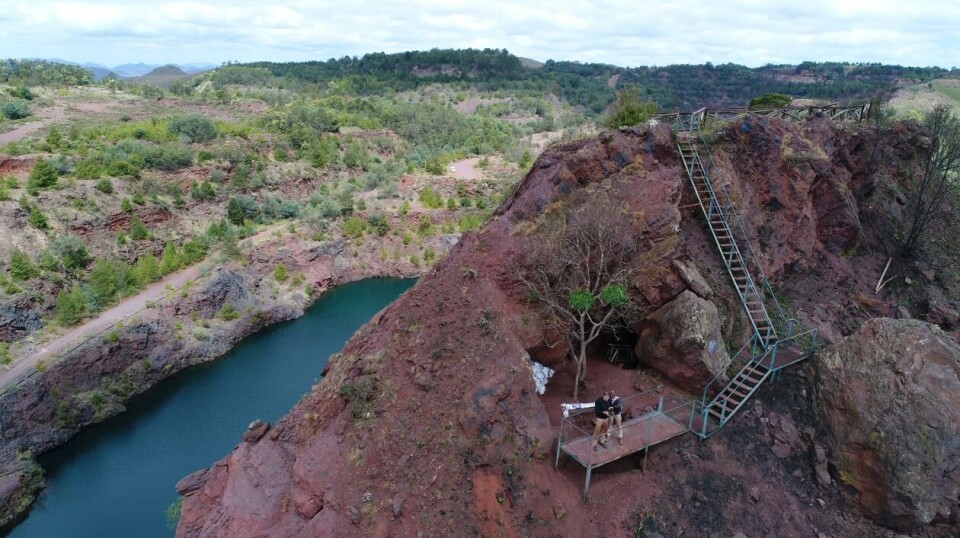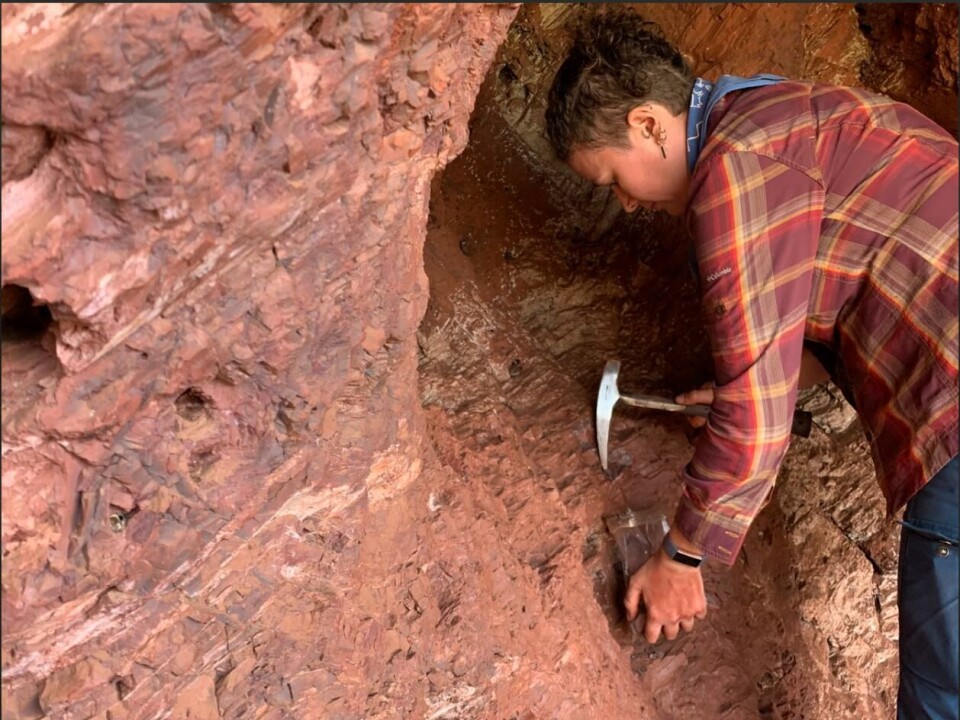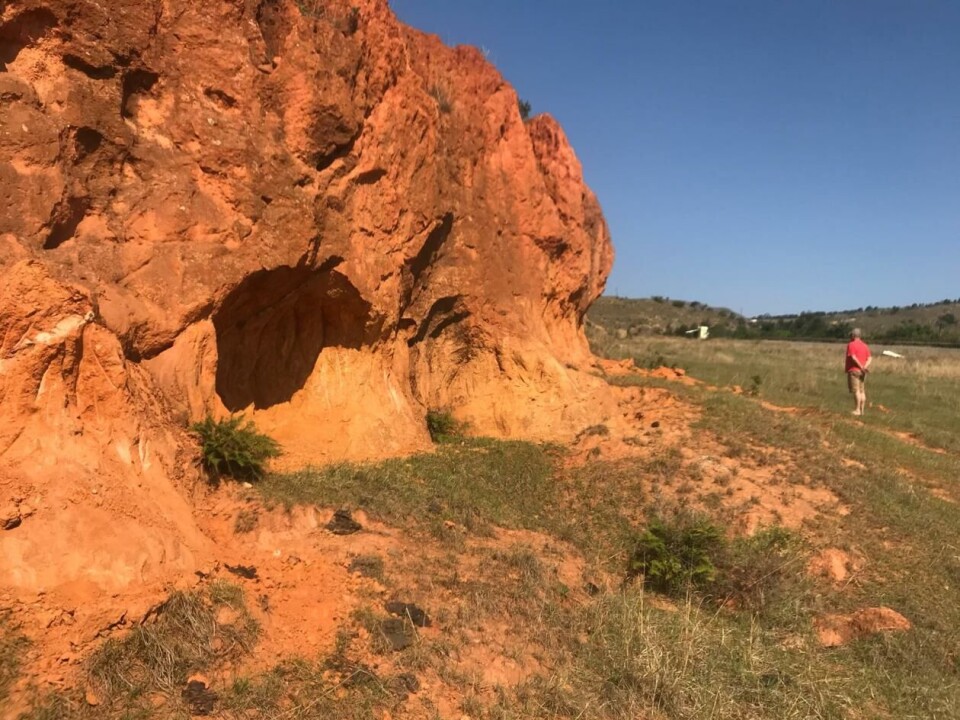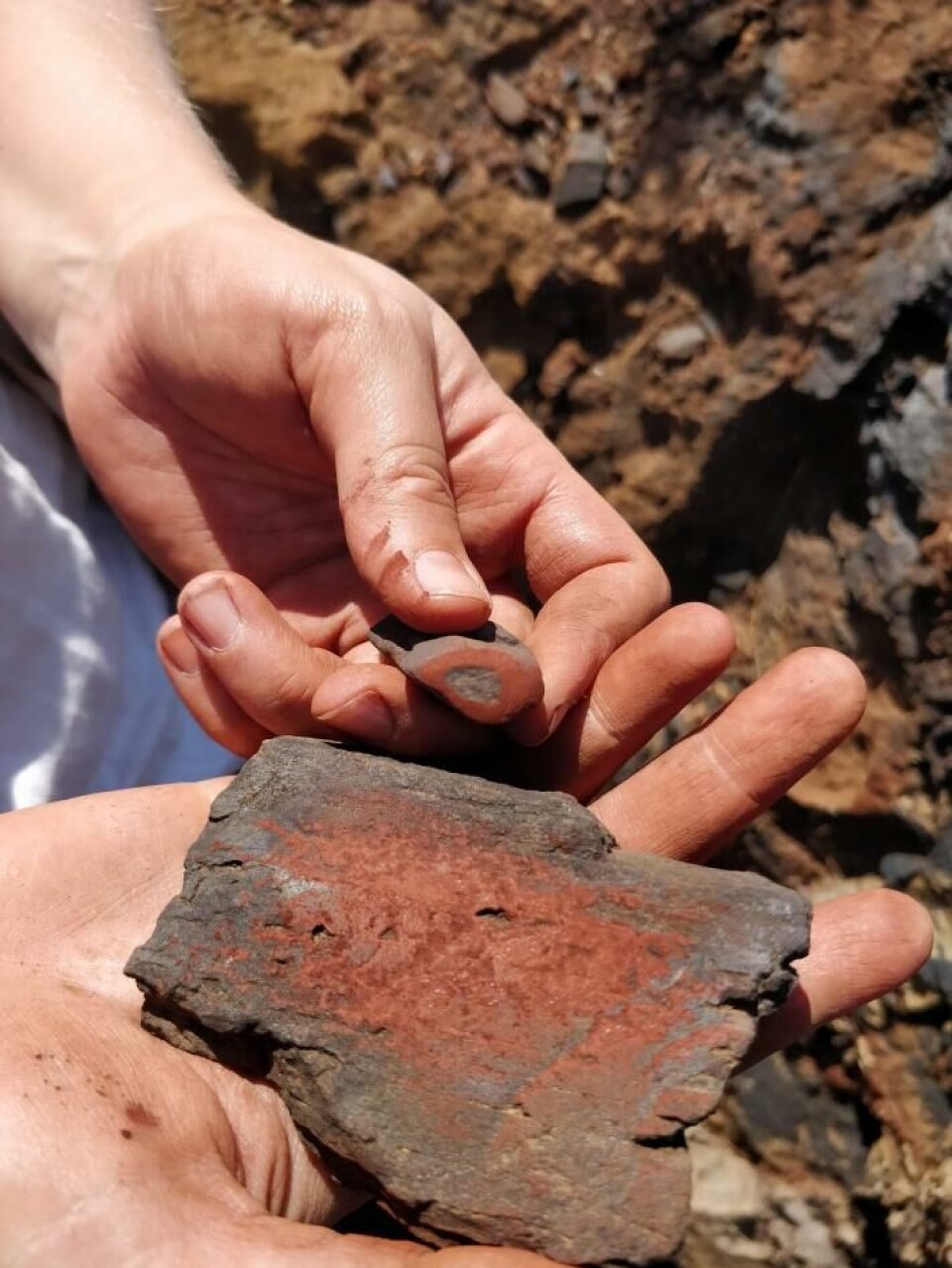THIS CONTENT IS BROUGHT TO YOU BY the University of Bergen - read more
Early humans in Eswatini chose ochre based on traditions, not just quality
For decades, archaeologists assumed that Stone Age communities in Eswatini sourced their ochre exclusively from the world’s oldest known mine, Ngwenya. A new study suggests the answer lies not in practicality but in tradition, identity, and social networks.

For years, researchers believed that the world's oldest ochre mine, Ngwenya in Eswatini, was the only source of ochre pigment for early human communities.
However, a groundbreaking new study published in Nature Communications challenges this assumption.
A research team has discovered that instead of relying solely on Ngwenya's high-quality pigment, ancient communities used a diverse range of local ochres.
This unexpected finding sheds new light on the cultural traditions and social interactions of Stone Age communities in Eswatini. Rather than being driven purely by pigment quality, their choices appear to have been shaped by cultural preferences, intricate networks of exchange, and symbolic expression.
Neutron Activation Analysis (NAA)
To analyse the ochres, researchers used Neutron Activation Analysis (NAA), a highly sensitive technique at the University of Missouri Research Reactor (MURR). This method helps specialists such as lead author Dr. Brandi MacDonald uncover detailed information about the composition of ochres, offering a deeper understanding of where people were collecting these materials.
“This particular method makes it possible to unlock information on the major, minor, and trace elements of materials, which many other non-bulk sampling techniques do not offer,” says Elizabeth Velliky.
She is a postdoctoral fellow based at the University of Bergen's Centre for Early Sapiens Behaviour (SapienCE).
Velliky has used the same method to analyse ochres from Blombos Cave and the Klein Karoo, which means this data will be comparable to the Eswatini data.

Challenging previous assumptions
Velliky explains that the study from Eswatini is not only groundbreaking but also a reminder that science must always challenge 'given' assumptions and evolve.
“For a long time, many archaeologists believed that the Ngwenya ochre mine was likely a major source of ochre pigment for prehistoric groups, with some suggesting that ochre from this mine could have been transported up to 300 kilometres away. We now know that there's a lot more to the story than we once assumed,” she says.
This belief came from the ochre’s high quality – its colour is very saturated, it is fine-grained, which makes it soft and easy to turn into powder, and sometimes it has a specular, glittery appearance.
However, the research team found that people in the area maintained unique cultural traditions and did not rely solely on the Ngwenya ochre.
"Instead, diverse local ochres were being used, highlighting unique cultural traditions and complex social interactions in the Stone Age,” says Velliky.
Surprising findings
The research team were surprised to find that two nearby archaeological sites from the same time period had very different pigment artefacts.
“It was very interesting to see that even when there is this gigantic ochre mine close by, it doesn’t mean that it was the only ochre mine being accessed in the past,” she says.
The researchers also found it fascinating how many different types of ochre could form in one place and how people used a variety of pigments within such a small area.
Even so, ochre from the Ngwenya mine was collected and transported up to 100 kilometres within the country. While this was not a regular occurrence, it still shows that there was a shared recognition of the importance of this material throughout the Middle Stone Age and Later Stone Age in Eswatini.
These findings suggest that cultural practices did not develop in isolation but were shaped by broader social networks, such as technological learning, seasonal travel, material cultural exchange, and symbolic expression.
Social practices and cultural identity
Velliky explains that social practices and norms influenced how people used ochre in group activities.
"These could include people moving through the landscape to locate and collect different materials, including ochre, and then teaching others how to locate these types of formations and which physical characteristics are present in each place," she says.
The researcher explains that the knowledge and know-how needed to be transferred and shared over and over again for people to sustain these types of behaviours and social practices.
The diversity and complexity of these behaviours shows how ochre helped create a shared cultural identity while allowing for local differences.

Velliky also points out that this study brings Eswatini back into the international discussion on Middle Stone Age and Later Stone Age behaviours in southern Africa. Much of the focus has previously been on South Africa, but that is only part of the picture.
Humans are complex creatures
“The emerging picture is one of a unifying culture of significance around ochre and its longstanding importance within social activities across Stone Age Eswatini," says Velliky.
She also notes that different communities had their own unique ways of using ochre, shaped by their specific contexts and traditions.
According to Velliky, this is a good reminder that we always need to be open to challenging our assumptions. The obvious, simplest explanation is not always the right one.

“Humans are complex creatures with nuanced behaviours, cultures, and social structures. We do things that don’t always make sense; we go out of our way for certain things for personal or communal reasons," she says.
Velliky found it fascinating to see evidence of this in Eswatini, and is now studying similar patterns at the sites of Blombos and Klipdrift as part of the Centre for Early Sapiens Behaviour (SapienCE) at the University of Bergen.
Bridging the past and the future
Velliky aims to compare these findings with her ongoing research in other regions and sites.
She has collected samples from over 50 ochre sources in the region, which she hopes will give new answers about the behaviours and practices surrounding ochre use during the Middle Stone Age.
“Perhaps it paints a similar story, perhaps it's completely different. Perhaps the coolest thing was seeing how the people of Eswatini are still using ochre today; you could easily buy it at the market, and everyone knows what it is," she says.
Velliky goes on to note that ochre is not just a material of the distant ancient past but remains very much alive today throughout the entire world, including Scandinavia.
"This will tell us more about how and perhaps why people do the things they do in regard to ochre and pigment use,” she concludes.
Reference:
MacDonald et al. Ochre communities of practice in Stone Age Eswatini, Nature Communications, vol. 15, 2024. DOI: 10.1038/s41467-024-53050-6

This content is paid for and presented by the University of Bergen
This content is created by the University of Bergen's communication staff, who use this platform to communicate science and share results from research with the public. The University of Bergen is one of more than 80 owners of ScienceNorway.no. Read more here.
More content from the University of Bergen:
-
Researcher: Politicians fuel conflicts, but fail to quell them
-
The West influenced the Marshall Islands: "They ended up creating more inequality"
-
Banned gases reveal the age of water
-
Researchers discovered extreme hot springs under the Arctic
-
Tiny particles unlock vinegar’s hidden healing potential
-
“Why doesn't it rain more?” asks researcher




































